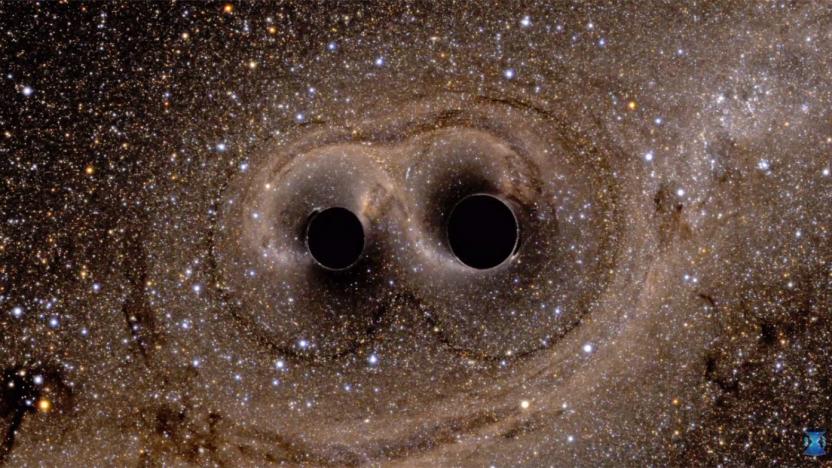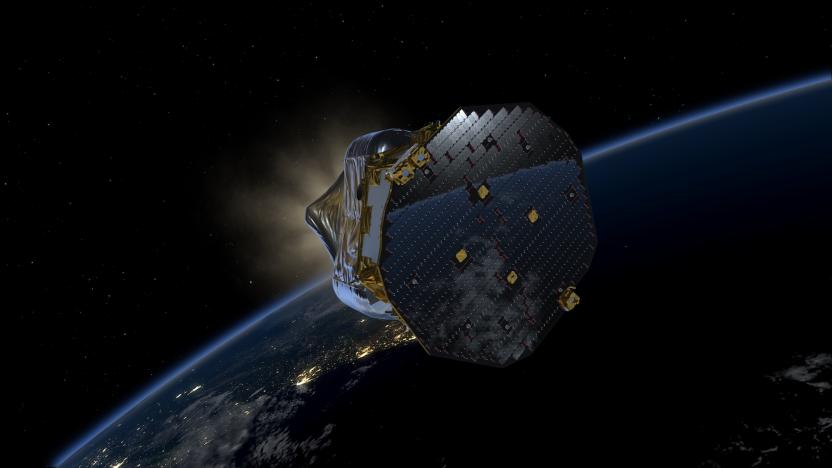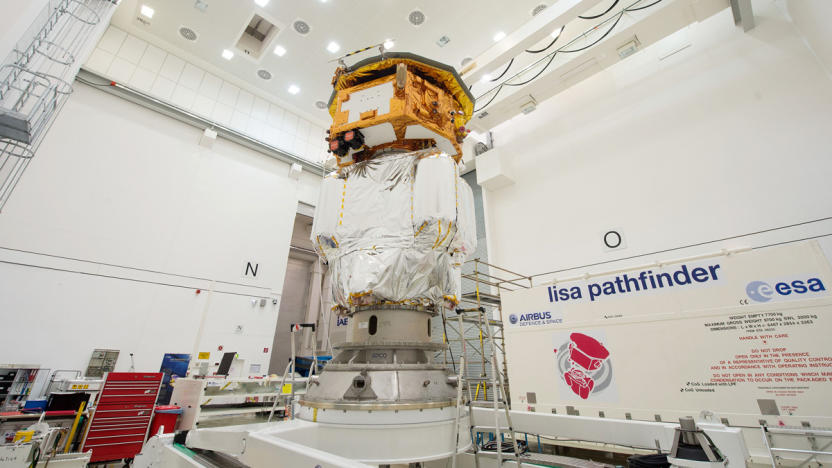gravitationalwaves
Latest

ICYMI: Ripples in Spacetime, brain jolts to learn and more
#fivemin-widget-blogsmith-image-917098{display:none;} .cke_show_borders #fivemin-widget-blogsmith-image-917098, #postcontentcontainer #fivemin-widget-blogsmith-image-917098{width:570px;display:block;} try{document.getElementById("fivemin-widget-blogsmith-image-917098").style.display="none";}catch(e){}Today on In Case You Missed It: Researchers at the Laser Interferometer Gravitational-Wave Observatory confirmed Einstein's theory that ripples in the fabric of spacetime do, in fact, exist. They spotted the gravitational waves made when two black holes collided.

Gravitational waves are our window into the early universe
"We have detected gravitational waves. We did it," David Reitze, executive director of the Laser Interferometer Gravitational-Wave Observatory (LIGO), said at a press conference in Washington on Thursday. Reitze has good reason to be excited. LIGO's find is a huge, Nobel Prize-worthy accomplishment on par with CERN's discovery of the Higgs particle in 2012. Just as Higgs particles revolutionized the standard model of physics, gravitational waves are set to do the same to Einstein's theory of general relativity. Simply put, it will fundamentally alter how we view and interact with the universe around us.

Science confirms that gravitational waves exist
At last, scientists have validated a key part of Einstein's general theory of relativity. The National Science Foundation, Caltech and MIT have confirmed the existence of gravitational waves, or ripples in spacetime. Their two LIGO (Laser Interferometer Gravitational-wave Observatory) detectors measured atomic-scale differences on September 14th, 2015 that point to the collision of black holes (also a new discovery) 1.3 billion years ago, triggering gravity ripples that only just reached Earth. There have long been hints of these waves, but hard evidence has proven elusive until now.

Watch ESA explain how it plans to find gravitational waves
In just under a week the European Space Agency (ESA) will launch its LISA Pathfinder spacecraft on a Vega rocket. Buried within the vessel are two cubes made of gold-platinum which, scientists hope, can lay the groundwork for measuring gravitational waves in space. The theories and testing procedures can be tricky to wrap your head around, but thankfully the ESA has made some explainer videos (below) to help you out.

ESA craft will prove that you can measure gravity waves in space
Scientists have spent ages searching for gravity waves from the safety of Earth, but they haven't had the chance to study those waves in space, where they could help make sense of black holes and other objects that distort spacetime. They're one step closer to getting that shot, though. The European Space Agency is almost ready to launch a vehicle, LISA Pathfinder, that will demonstrate the viability of measuring gravity waves in space. When it begins testing in March, Pathfinder won't actually measure gravitational effects at all. It'll instead look for extremely minute (picometer-level) changes between two test masses within the spacecraft, proving that you can achieve the extreme level of precision needed for a gravity wave detector.



